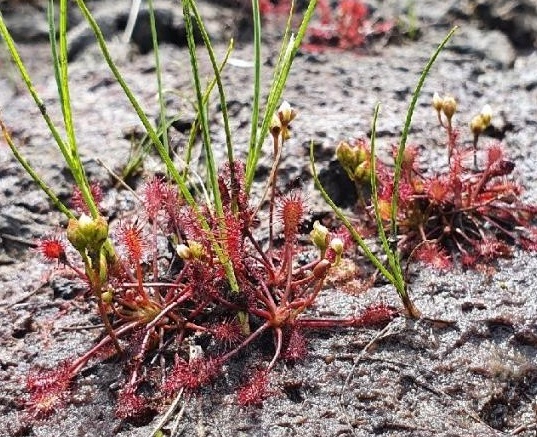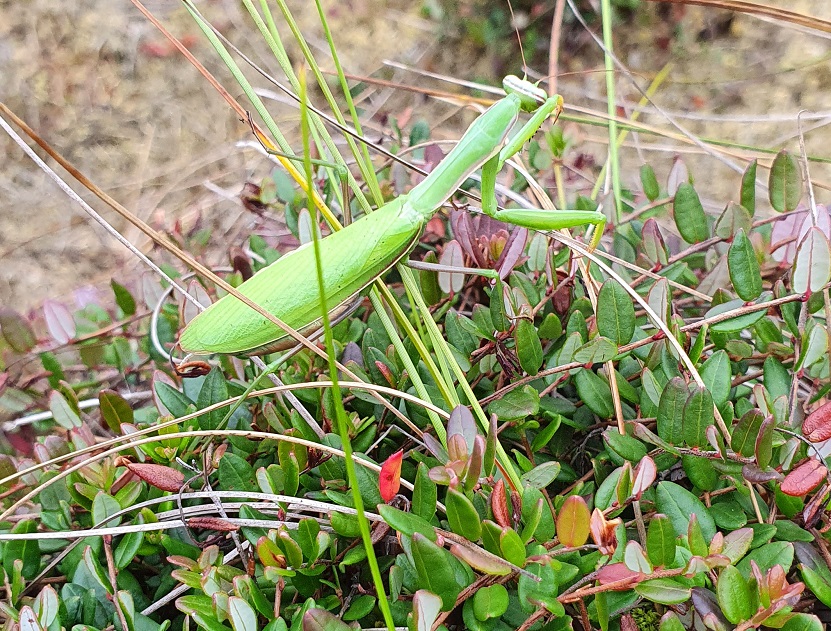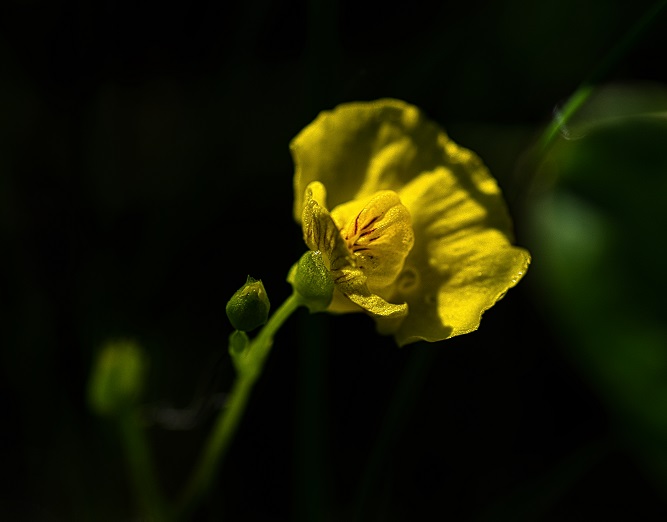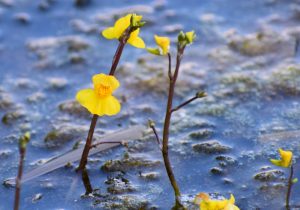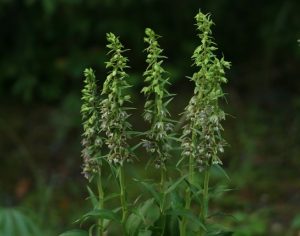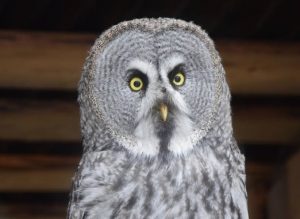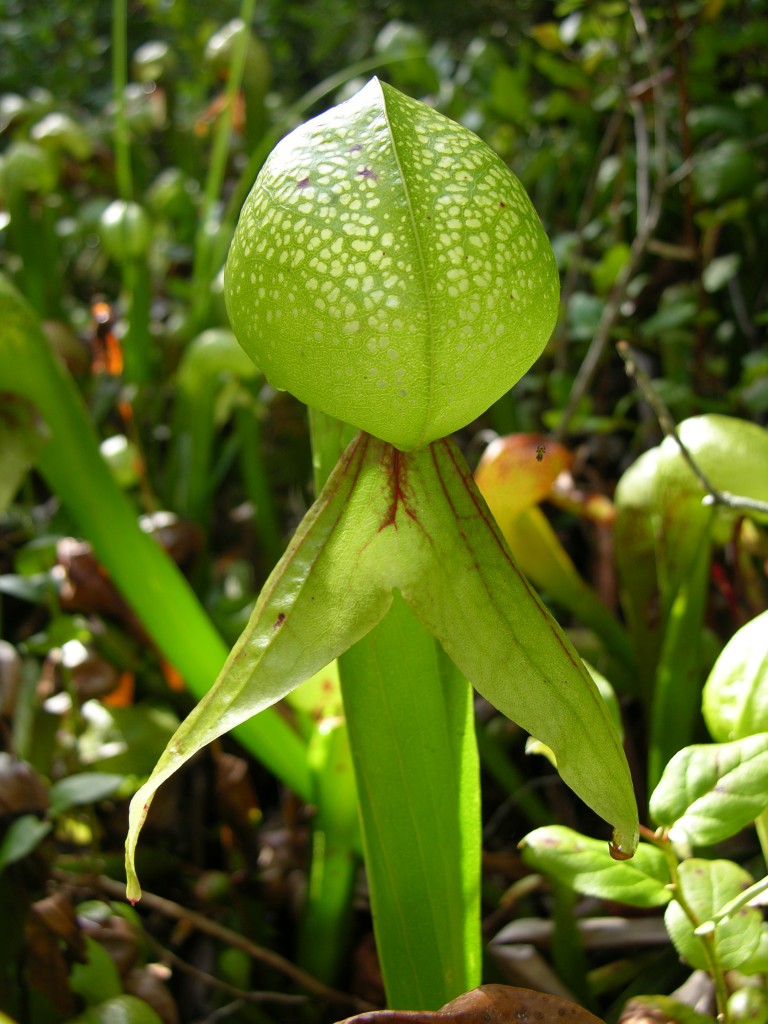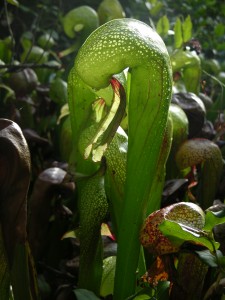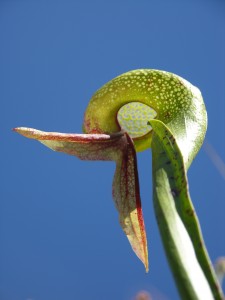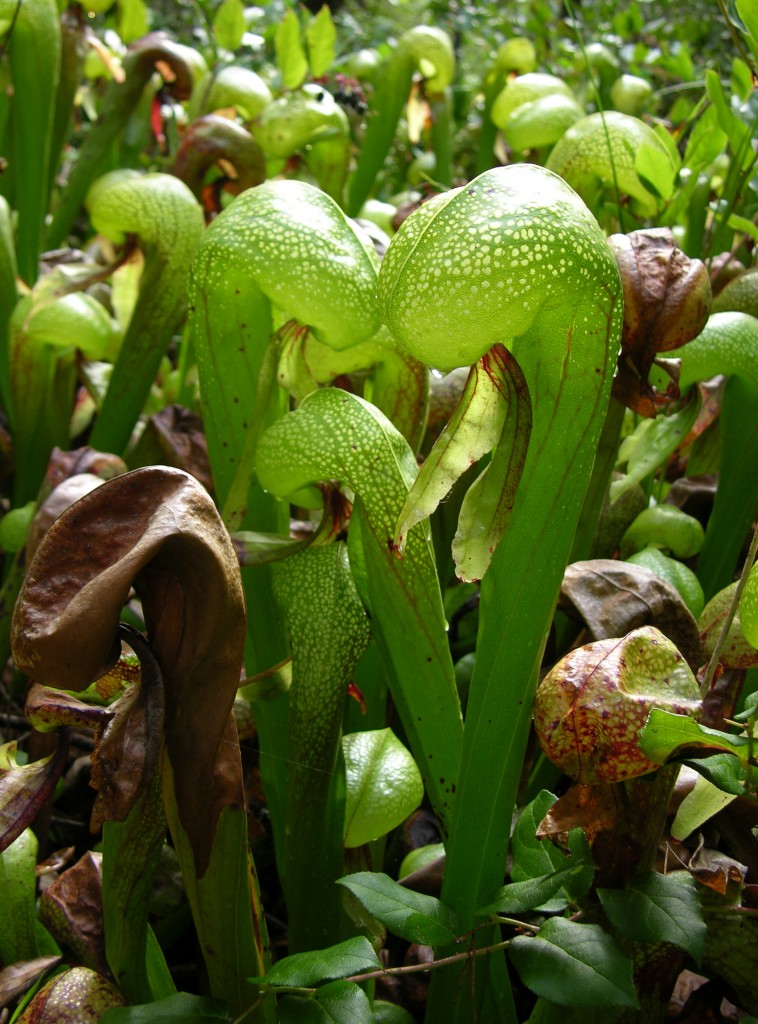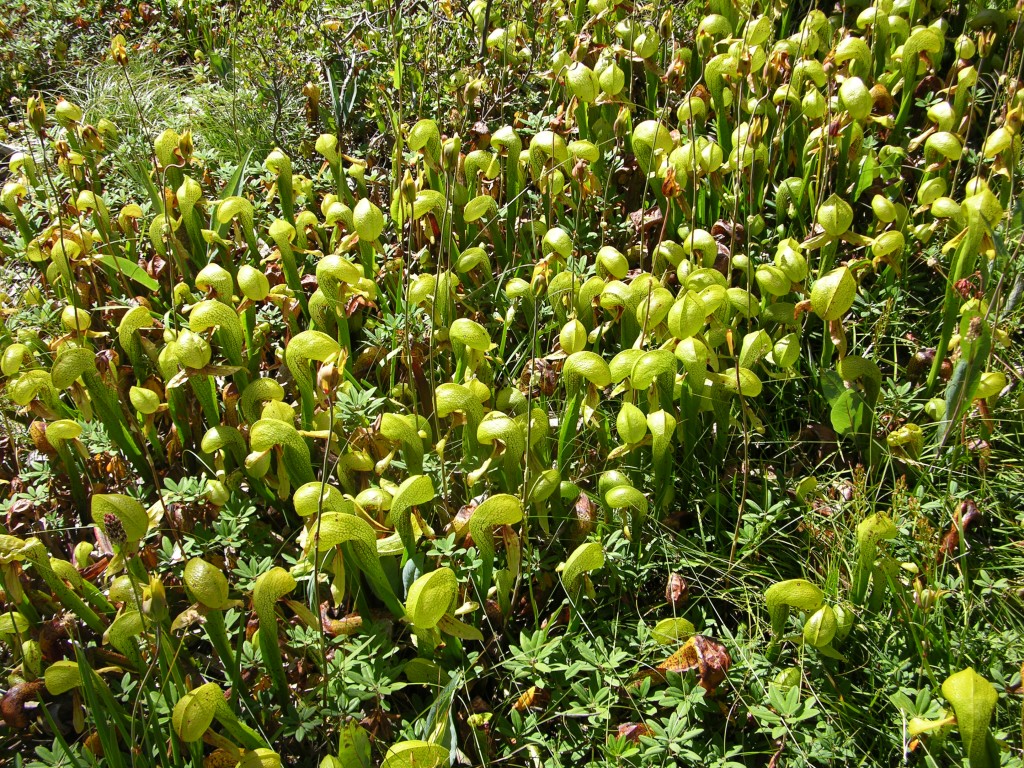There are seven genera of pitcher plants that are distributed across the world, the most unusual of all is the genus Darlingtonia which consists of one species, D. californica, which produces extraordinary shaped, hollow leaves that resemble striking cobras, poised upright ready to attack. It is the strange shape of the foliage of D. californica which has earned this plant its common name ‘the cobra lily’ and a reputation as one of the most bizarre of all carnivorous plants.
D. californica is found exclusively on the west coast of the United States of America as scattered populations distributed across Oregon and northwest California. This plant was originally discovered in 1841 to the northwest of Mount Shasta by an American botanist, J. D. Brackenridge. Brackenridge was at the time undertaking an expedition to the remote western frontier and found D. californica by chance. The genus Darlingtonia was formally described by botanist John Torrey in 1853 and named in honour of his friend, Dr. William Darlington, a 19th-Century physician and politician of Birmingham, Pennsylvania.
D. californica produces two types of leaves, young, immature plants, produce simple tubular foliage that is up to 5 cm in length. The foliage is reddish green and reminiscent of the leaves of the other closely related American pitcher plant genera, Heliamphora and Sarracenia. When D. californica plants reach maturity however, the leaf shape changes dramatically and is altogether unique.
The foliage of mature plants is greenish, yellow, 20–80 cm in height and consists of an upright hollow shaft that terminates in a roughly oval, bulbous, dome structure that extends forward. On the underside of the forward projecting portion of the dome is a 10–20-mm-wide hole located immediately behind a long, pure red, fishtail-shaped appendage. The surface of the dome and the upper parts of the tubular shaft are lined with small, irregular, transparent fenestration. The small hole on the underside of the dome represents the only opening into the interior of the hollow leaf. The perimeter of the entrance hole protrudes into the dome and roles back on itself, forming an inward-projecting rim similar to the entrance of a lobster pot. Nectar is secreted profusely on the back side of the fishtail appendage and around the entrance hole. The interior of the dome is glabrous, smooth and relatively waxy.
The strange shape of the foliage of D. californica is a deliberate adaptation to enable a remarkably complex trapping process to take place, so that this plant can catch a range of arthropod prey. A strong sweet scent emanates from the profuse secretions of nectar concentrated on the backside of the fishtail appendage of the Darlingtonia leaf. The sugary aroma attracts various insects, especially wasps and flies, which climb towards the entrance hole to reach the densest nectar secretions. By following the nectar trails, insects are manoeuvred directly below the entrance hole. From this position, the insect can detect light shining through the transparent fenestration which the insect interprets as the direction of clear sky and freedom. It climbs or flies through the inward-pointing entrance hole, collides with the transparent fenestration, falls down the back of the dome into the vertical tubular shaft and plummets into the liquid contained within. Unable to scale the slippery, waxy interior surface of the leaf, the insect eventually drowns, is decomposed and the nutrients released from its remains are absorbed by the plant. Mainly flies, beetles and ants are caught.
This complex trapping process is seen only in a few other pitcher plants. Two species of pitcher plants of the genus Sarracenia and coincidentally also two species of the tropical pitcher plants Nepenthes produce traps with deceptive, translucent window-like patches which attract insect prey in a manner comparable to D. californica. In these cases, insects are similar caught, however the trapping process is not as complex or as highly evolved as that of D. californica and more akin to regular pitcher plants.
D. californica is easy to grow in cultivation, providing a few basic growing requirements are understood. This plant naturally occurs in cool, humid, wet, well-lit environments and has adapted to inhabit a wide range of wet, boggy, niche habitats and so requires permanently moist or wet substrate, high humidity and well lit conditions. Most importantly, D. californica requires cool temperatures through the year and a period of dormancy that reflects the winter of the northern hemisphere. In Oregon and California, D. californica experiences cool summers (usually below 30ºC) and cold winters during which, for several months, the daily temperature is below 10ºC and may plunge below zero regularly. In order to cultivate this plant successfully, a period of several months of cold temperatures must be provided during which plants become dormant as this is important in the annual growth cycle of this plant. A period of dormancy can easily be provided by placing a D. californica plant in the fridge for three or four months each year, see D’Amato (1998), Slack (1979, 1986) and Rice (2006)
In the wild, D. californica grows in substrate that consists of a mix of acidic coniferous leaf litter and peaty loam which is usually moist or wet. In cultivation, D. californica plants grow best in a mix of sphagnum moss peat, sand and perlite at a ratio of approximately 2:1:1 parts. In the wild, D. californica plants often grow at the margins of small streams or ponds, and in cultivation, it is important that the plants roots are kept relatively cool, which can be accomplished by standing pots of D. californica in water. A full understanding of how to successfully cultivate D. californica can be gained from reading the works of D’Amato (1998), Slack (1979, 1986) and Rice (2006) which I recommend to the reader.
Unfortunately, several of the carnivorous plants of the United States of Americas are severely threatened. Fortunately however, the conservation status of D. californica is relatively secure, and the outlook for future viability of this plant in the wild is quite positive. Because the range of this plant is primarily in mountains and remote areas, the habitat of this plant has not been subjected to the same level of destruction seen elsewhere across North America. Furthermore, a significant proportion of the original habitat of this species has been protected through well-managed conservation initiatives, and much of the beautiful coastline of northern California and Oregon has been set aside and protected as permanent nature reserves.
Indeed, immediately north of Florence, Oregon, there is a wayside preserve that has been set up explicitly to protect D. californica — Oregon’s only state park dedicated to the preservation of one particular plant species. While it is easy to see D. californica in the wild and the state park officers of California and Oregon generally help naturalists find and enjoy wildlife, it is important to remember that the collection of these plants from wild populations is strictly prohibited by law and must be respected by all visitors.
D. californica plants can be purchased from the following sources:
Hampshire Carnivorous PlantsYa Mayla, Allington Lane, West End, Southampton, SO30 3HQ, United Kingdom
Website: www.hantsflytrap.com P&J Carnivorous Plants
The Hayden, Brampton Lane, Madley, Hereford, HR2 9LX, United Kingdom
Website: www.pj-plants.co.uk Sarracenia Nurseries
37 Stanley Park Road, Carshalton, Surrey, SM5 3HT, United Kingdom
Website: www.sarracenia.co.uk Shropshire Sarracenias
5 Field Close, Malinslee, Telford, Shropshire, TF4 2EH, United Kingdom
Website: www.carnivorousplants.uk.com .
Bibliography:
- D’Amato, P. 1998. The Savage Garden: Cultivating Carnivorous Plants. Berkeley, CA: Ten Speed Press.
- Rice, B., 2006 Growing Carnivorous Plants Portland, OR: Timber Press.
- Slack, A. 1979. Carnivorous Plants. London, England: Ebury Press.
- Slack, A. 1986. Insect Eating Plants and How to Grow Them. London, England: Alpha Books.
Stewart McPherson
